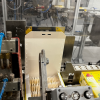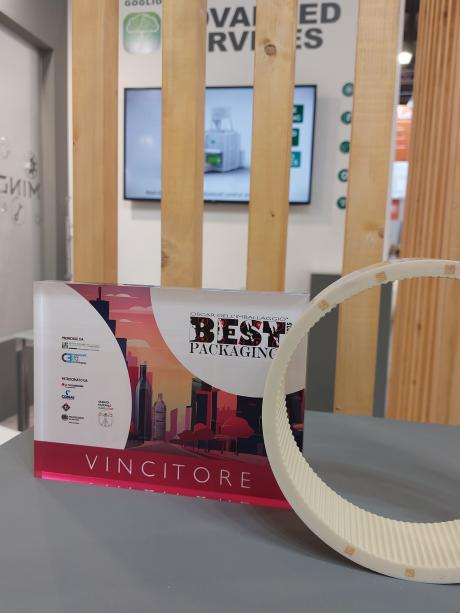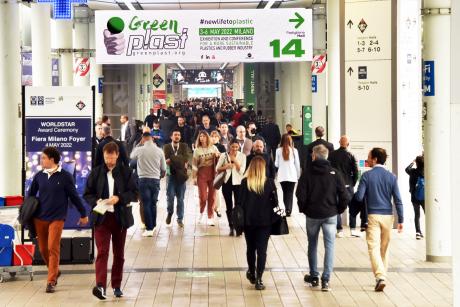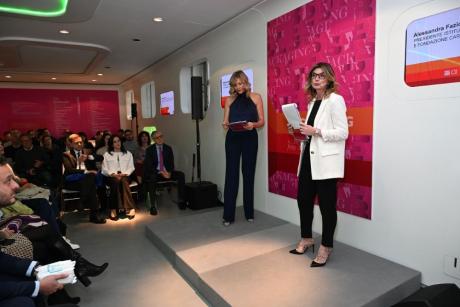The automatic packing and packaging machines industry marks a historic milestone: in 2022, the industry recorded a total turnover of €8.537 billion, improving the previous record set in 2021 by 3.6%. Considering the 2019-2022 period overall, the industry's turnover has grown by approximately half a billion euros in just 4 years, recording the uptrend despite the outbreak of the pandemic and its adverse impacts worldwide.
This data was disclosed at the annual Members' Meeting by the Mecs - Ucima Research Centre, reporting its 11th National Statistical Survey, which provides a snapshot of the industry's performance every year. 616 companies were surveyed, with employees amounting to over 37 thousand.
The international markets
Italian manufacturers propensity for export, especially in the packaging technologies and solutions industry, was also confirmed in 2022, with foreign turnover accounting for 77% of the total and amounting to €6.57 billion (+1.7 % on 2021).
The podium of geographical areas remains the same: with 2.52 billion in sales, the European Union confirms its position as the main target area for machines made in Italy, making up 38.4% of all exports. Asia comes second with a turnover of €1.23 billion, representing 18.8% of the industry's total international sales. Third place, meanwhile, was held by North America, with sales amounting to €1.14 billion. Next came non-EU Europe (€650 million), followed by South America (€456 million), and Africa and Oceania with €565 million.
The domestic market
The domestic market marked a significant leap, with a rise of 10.6% on 2021, taking Italian manufacturers to the almost €2 billion mark at home, with a final balance of €1.96 billion and 23% of total turnover.
Customer industries
As far as customer industries are concerned, the division between food and beverage and non-food industries is respectively 56.7% and 43.3%. In more detail: the food industry was the top-ranking customer industry in 2022, taking up 31.9% of total turnover with its €2.72 billion. The beverage industry took second place, with 24.8% of the total turnover, an absolute value of €2.11 billion, and growth of 8%. Third place on the podium went to tissues and other items, with €1.59 billion (18.6% of the total), marking a rise of 6% (and a significant increase, of 27.8%, in the domestic market), followed by pharmaceuticals, cosmetics, and the chemical and home care industries.
Turnover by production type
The primary packaging machine family remained predominant with 50.2% of turnover (€4.28 billion deriving from the sale of these machines), followed by the end-of-line, labelling, and ancillary equipment segment (28.4%) and the secondary packaging (which takes up the remaining 21.4%).
Production structure
The companies that manufacture packing and packaging machinery are mainly concentrated along the regional thoroughfare called Via Emilia, forming an area that its now known as Packaging Valley, although other production districts are also located in Lombardy, Piedmont, Veneto and Tuscany. The geographical location of the companies therefore confirms the predominance of the Emilia-Romagna region in terms of number of companies, employees, and turnover. There are 222 companies based in Emilia-Romagna (36% of the national total), which employ 21,946 people (58.1% of the national total) and generate 62.6% of the total turnover, which amounts to €5.34 billion.
Lombardy, Veneto, and Piedmont follow in that order. Among the provinces, Bologna and Milan come above Parma (third) and Vicenza (fourth) for the number of packaging machine companies. But when considering the distribution of employment and turnover, the dominance of the Emilia area is clear: Bologna, Parma, Reggio Emilia, Modena (all in Emilia), and then Rimini (Romagna) occupy the first five places, Vicenza comes sixth, and Bergamo and Milan respectively rank seventh and eighth.
The distribution by class of turnover shows a clear numerical predominance of small companies (those in the first two classes - up to €5 million - make up 64.1% of the total), which, however, make up just 7.6% of the industry's turnover. On the other hand, only 9% of companies have a turnover of over €25 million, even though they represent the most significant share (72.8%) of the total.
Employment structure
The industry is made up of 616 companies that employ 37,753 workers, marking a rise of 3.9% on 2021, with the entire industry recording 1402 new hires in one year.
Outlook for 2023
For 2023, the Mecs - Ucima Study Centre surveys found that further growth is expected by 47% of the companies interviewed. 41.7% expect a stable continuation of the year, while 10.3% fear a decline.
“An extraordinary result, but investments are threatened by various factors”
“If you look back, we have achieved something really quite extraordinary – stated Ucima chair Riccardo Cavanna -. 2022 was marked by ups and downs and strong international tensions, from the supply chain to the increase in costs to the conflict in Ukraine, but we still managed to grow, hitting the €8 and a half billion mark for the first time. It demonstrates, beyond doubt, that the Italian industry is the one that foreign markets look to and proves the outstanding response capacity of our companies, which are second to none in terms of inventiveness and ingenuity in stressful situations. We are proud of the final results for the year and hope to maintain them in 2023, but it will not be easy. For the second part of the year, in fact, the indicators available to us are showing a slowdown in global demand. What is more - concludes Mr Cavanna - certain obstacles to investments are causing concern for the near future, including: the new European packaging regulation (about which we have our doubts) and its approval process, rising interest rates, the persisting uncertainty in some areas of the world, and the lack of new 4.0 policies. These are all threats to our leadership position and they are threats we cannot neutralise on our own."









